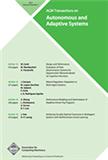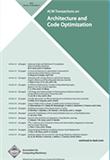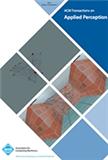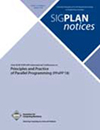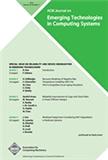GRAPHICAL MODELS
SCI/SCIE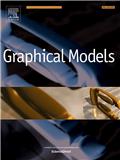
- 雜志名稱:圖形模型
- 簡(jiǎn)稱:GRAPH MODELS
- 期刊ISSN:1524-0703
- 大類研究方向:工程技術(shù)
- 影響因子:0.727
- 數(shù)據(jù)庫(kù)類型:SCI/SCIE
- 是否OA:No
- 出版地:UNITED STATES
- 年文章數(shù):19
- 小類研究方向:工程技術(shù)-計(jì)算機(jī):軟件工程
- 審稿速度:約3.0個(gè)月
- 平均錄用比例:容易
官方網(wǎng)站:http://www.sciencedirect.com/science/journal/15240703
投稿網(wǎng)址:http://ees.elsevier.com/gmod/default.asp?acw=2
GRAPHICAL MODELS
英文簡(jiǎn)介Graphical Models is recognized internationally as a highly rated, top tier journal and is focused on the creation, geometric processing, animation, and visualization of graphical models and on their applications in engineering, science, culture, and entertainment. GMOD provides its readers with thoroughly reviewed and carefully selected papers that disseminate exciting innovations, that teach rigorous theoretical foundations, that propose robust and efficient solutions, or that describe ambitious systems or applications in a variety of topics.We invite papers in five categories: research (contributions of novel theoretical or practical approaches or solutions), survey (opinionated views of the state-of-the-art and challenges in a specific topic), system (the architecture and implementation details of an innovative architecture for a complete system that supports model/animation design, acquisition, analysis, visualization…), application (description of a novel application of know techniques and evaluation of its impact), or lecture (an elegant and inspiring perspective on previously published results that clarifies them and teaches them in a new way).GMOD offers its authors an accelerated review, feedback from experts in the field, immediate online publication of accepted papers, no restriction on color and length (when justified by the content) in the online version, and a broad promotion of published papers. A prestigious group of editors selected from among the premier international researchers in their fields oversees the review process.Because timely publication of research results is important for the careers of our authors and for the vitality of the field, GMOD is putting in place its R3 (Rapid Response Review) system, which strives to provide authors with a preliminary decision within an average of one month after submission.The following are examples of topics typically covered in GMOD:Shape Processing: Analysis of local properties. Averaging and relative convex hulls. Correspondence, registration, matching and retrieval. Detection of ridges, features, patterns, and symmetries. Measures of volume, compactness, or convexity. Morphological operations (offsetting, rounding, tightening). Segmentation. Similarity measures, comparison, variability statistics.Points: Analysis. Interpolation. Multi-resolution. Rendering. Segmentation. Separation.Curves: Parametric. Implicit. Fitting. Smoothing, Subdivision. Constant length. Extraction. Segmentation. Matching. Comparison. Averaging. Curves on surfaces. Rounding, Offsetting, Regularity.Skeletons: Animation and Skinning. Medial axis or curve skeleton (construction, approximation, properties)Meshes: Compact data structures. Feature extraction and replication. Feature exaggeration. Levels of Detail. Simplification. Shape measures. Parameterization. Re-sampling. Smoothing. Subdivision. Volume/area preservation. Feature sharpening.Surfaces: Implicit. Parametric. Curvature. Hole filling. Geodesics. Intersection. Interpolating. Reconstruction. Sampling.Solids: Boolean operations. Boundary representations. CSG. BSP. Non-manifold models. Inhomogeneous models. Non-manifold models and complexes. Offsets. Reconstruction from drawings, images, videos. Repair. Rounding and smoothing. Sweeps.Volumes/Images/Video: Matching. Searching. Filtering. Compression. Segmentation. Stitching. Merging. In-painting. Isosurfaces. Rendering.Design: Constraint-based. Feature-based. Variational. Direct manipulation. Haptics. Multimodal interfaces. Multiuser interfaces. Pen-based Procedural models and patterns.Motion: Rigid, affine, steady. Analysis. Capture. Pattern extraction. Synthesis. Constrained. Blending.Morphing: Curves. Graphs. Images. Volumes. Meshes. Solids. Surfaces. In-betweening.Deformation: Capture/acquisition. Direct manipulation. Free-form,. Image/volume warping. Interpolating meshes. Preservation of local details.Animation: Design. Evaluation. Behavioral. Retargeting. Data driven. Humans. Animals. Face. Hand. Gate. Swimming. Constrained. Preserving volume, area, or length. Optimization.Simulation: Collision and friction. Articulated and flexible shapes. Physically based behavior. Cloth. Crowds and flocks. Deposition, erosion, and biological growth. Fluid. Hair. Viscoelastic deformations. Sound.Rendering: Illustrative (non-photorealistic). Image-based. Artistic. Global Illumination. Occlusion. Perception. Perspective. Acceleration of radiosity./raytracing. Reflectance and Shading Models. Relighting. Silhouettes. Shadows. Texture Mapping. Visibility.Hardware Acceleration: Collision and visibility queries. Frame buffer algorithms. GPUs and parallelization. Model Acquisition and Scanning. Ray Casting/Tracing Hardware.Model Dissemination: Shared models. Collaborative access. Geometry compression. Progressive/selective refinements. Streaming scenes and animations. Watermarking.Tool: Artificial intelligence. Computational geometry. Data structures. Differential geometry. Genetic algorithms. Linear algebra . Machine learning. Mathematical morphology. Numerical accuracy. Numerical analysis. Optimization. Signal Processing. Topology. Wavelets.Application: Manufacturing. Robotics. Architecture and urban simulation. Medicine. Biology. Natural phenomena. Cinema. Videogames. Education. Cultural Heritage. Typography. Scientific Computing.
GRAPHICAL MODELS
中文簡(jiǎn)介圖形模型被國(guó)際公認(rèn)為一種高評(píng)價(jià)的頂級(jí)期刊,其重點(diǎn)是圖形模型的創(chuàng)建、幾何處理、動(dòng)畫和可視化,以及其在工程、科學(xué)、文化和娛樂中的應(yīng)用。GMOD為讀者提供了經(jīng)過徹底審查和精心挑選的論文,這些論文傳播了令人興奮的創(chuàng)新,教授了嚴(yán)格的理論基礎(chǔ),提出了強(qiáng)有力和高效的解決方案,或描述了各種主題中雄心勃勃的系統(tǒng)或應(yīng)用程序。我們邀請(qǐng)五類論文:研究(新理論或?qū)嵺`方法或解決方案的貢獻(xiàn))、調(diào)查(對(duì)最新技術(shù)的觀點(diǎn)和特定主題的挑戰(zhàn))、系統(tǒng)(支持模型/動(dòng)畫設(shè)計(jì)的完整系統(tǒng)的創(chuàng)新架構(gòu)的架構(gòu)和實(shí)施細(xì)節(jié),獲取、分析、可視化、應(yīng)用(對(duì)所知技術(shù)的新應(yīng)用的描述和對(duì)其影響的評(píng)估)或講座(對(duì)先前發(fā)布的結(jié)果的優(yōu)雅和鼓舞人心的觀點(diǎn),澄清這些結(jié)果并以新的方式教授它們)。GMOD為其作者提供了一個(gè)加速審查、來自該領(lǐng)域?qū)<业姆答仭⒘⒓丛诰€出版已接受的論文、在線版本中不限制顏色和長(zhǎng)度(當(dāng)內(nèi)容合理時(shí)),以及廣泛推廣已發(fā)表的論文。一個(gè)著名的編輯小組從各自領(lǐng)域的頂尖國(guó)際研究人員中選出,負(fù)責(zé)監(jiān)督審查過程。由于及時(shí)公布研究結(jié)果對(duì)作者的職業(yè)生涯和該領(lǐng)域的活力至關(guān)重要,GMOD正在建立其R3(快速反應(yīng)審查)系統(tǒng),力求在提交后平均一個(gè)月內(nèi)為作者提供初步?jīng)Q定。以下是GMOD中通常涉及的主題示例:形狀處理:局部特性分析。平均值和相對(duì)凸殼。通信、登記、匹配和檢索。檢測(cè)脊線、特征、圖案和對(duì)稱性。體積、緊密度或凸度的度量。形態(tài)操作(偏移、舍入、收緊)。分割。相似性度量、比較、變異性統(tǒng)計(jì)。要點(diǎn):分析。內(nèi)插法。多分辨率。致使。分割。分離。曲線:參數(shù)化。隱性的。適合的。平滑、細(xì)分。恒定長(zhǎng)度。提取。分割。匹配。比較。平均化。曲面上的曲線。舍入、偏移、規(guī)則性。骨架:動(dòng)畫和蒙皮。中軸線或曲線骨架(構(gòu)造、近似、屬性)網(wǎng)格:壓縮數(shù)據(jù)結(jié)構(gòu)。特征提取和復(fù)制。特征夸張。細(xì)節(jié)層次。簡(jiǎn)化。形狀度量。參數(shù)化。再采樣。平滑的。細(xì)分。體積/面積保護(hù)。特征銳化。表面:隱式曲面。參量。彎曲。灌漿孔。測(cè)地線。交集。內(nèi)插。重建。抽樣。固體:布爾操作。邊界表示。CSG。BSP。非流形模型。非均勻模型。非流形模型和配合物。偏移量。從樓重建,圖片,視頻。修復(fù)。舍入和平滑。掃描。卷/圖像/視頻:匹配。搜索。過濾。壓縮。分割。縫合。合并。內(nèi)畫。等值面。渲染。設(shè)計(jì):基于約束。基于特征的。 變異的。直接操作。觸覺。多式聯(lián)運(yùn)接口。多用戶界面。筆型模式和程序模式。運(yùn)動(dòng):剛性,仿射,穩(wěn)態(tài)。分析。捕獲。提取模式。合成。約束。混合。變形:曲線。圖表。圖像。卷。網(wǎng)格。固體。表面。中間。變形:捕獲/收購(gòu)。直接操縱。自由形式。圖像/體積變形。插值網(wǎng)格。保存當(dāng)?shù)丶?xì)節(jié)。動(dòng)畫設(shè)計(jì)。評(píng)價(jià)。行為。重定向。數(shù)據(jù)驅(qū)動(dòng)的。人類。動(dòng)物。的臉。手。門。游泳。約束。保量、面積或長(zhǎng)度。優(yōu)化。仿真:碰撞和摩擦。鉸接和靈活的形狀。基于身體的行為。布。人群和羊群。沉積,侵蝕和生物生長(zhǎng)。流體。頭發(fā)。粘彈性變形。聲音。渲染:說明性(非真實(shí)感)。基于圖像的。藝術(shù)的。全球照明。閉塞。知覺。透視。輻射率的加速度。光線追蹤反射和陰影模型。重燃。剪影。陰影。紋理映射。能見度。硬件加速:碰撞的查詢和可視性。幀緩沖區(qū)算法。gpus和并行化。模型的采集和成像。光線投射/跟蹤的硬件。模型傳播:共享模型。協(xié)作訪問。幾何壓縮。漸進(jìn)/選擇性改進(jìn)。流媒體場(chǎng)景和動(dòng)畫。水印。工具:人工智能。計(jì)算幾何。數(shù)據(jù)結(jié)構(gòu)。微分幾何。遺傳算法。線性代數(shù)。機(jī)器學(xué)習(xí)。數(shù)學(xué)形態(tài)學(xué)。數(shù)值精度。數(shù)值分析。優(yōu)化。信號(hào)處理。拓?fù)洹P〔ā?yīng)用:制造業(yè)。機(jī)器人。建筑與城市模擬。醫(yī)學(xué)。生物學(xué)。自然現(xiàn)象。電影。視頻游戲。教育。文化遺產(chǎn)。印刷術(shù)。科學(xué)計(jì)算。
GRAPHICAL MODELS
中科院分區(qū)| 大類學(xué)科 | 分區(qū) | 小類學(xué)科 | 分區(qū) | Top期刊 | 綜述期刊 |
| 計(jì)算機(jī)科學(xué) | 4區(qū) | COMPUTER SCIENCE, SOFTWARE ENGINEERING 計(jì)算機(jī):軟件工程 | 4區(qū) | 否 | 否 |
GRAPHICAL MODELS
JCR分區(qū)| JCR分區(qū)等級(jí) | JCR所屬學(xué)科 | 分區(qū) | 影響因子 |
| Q4 | COMPUTER SCIENCE, SOFTWARE ENGINEERING | Q4 | 1.094 |
GRAPHICAL MODELS
中科院JCR分區(qū)歷年趨勢(shì)圖GRAPHICAL MODELS
影響因子精選同類領(lǐng)域期刊,熱門推薦輕松get~
-
- ACM Transactions on Autonomous and Adaptive Systems
- 期刊ISSN:1556-4665
- 大類研究方向:工程技術(shù)
- 影響因子:
- 數(shù)據(jù)庫(kù)類型:SCIE
- 咨詢投稿
-
- ACM Transactions on Architecture and Code Optimization
- 期刊ISSN:1544-3566
- 大類研究方向:工程技術(shù)
- 影響因子:1.444
- 數(shù)據(jù)庫(kù)類型:SCIE
- 咨詢投稿
-
- ACM Transactions on Applied Perception
- 期刊ISSN:1544-3558
- 大類研究方向:工程技術(shù)
- 影響因子:
- 數(shù)據(jù)庫(kù)類型:SCIE
- 咨詢投稿
-
- ACM Transactions on Algorithms
- 期刊ISSN:1549-6325
- 大類研究方向:工程技術(shù)
- 影響因子:
- 數(shù)據(jù)庫(kù)類型:SCIE
- 咨詢投稿
-
- ACM SIGPLAN NOTICES
- 期刊ISSN:0362-1340
- 大類研究方向:工程技術(shù)
- 影響因子:
- 數(shù)據(jù)庫(kù)類型:
- 咨詢投稿
-
- ACM Journal on Emerging Technologies in Computing Systems
- 期刊ISSN:1550-4832
- 大類研究方向:工程技術(shù)
- 影響因子:2.013
- 數(shù)據(jù)庫(kù)類型:SCIE
- 咨詢投稿
精選常見問題,答疑解惑輕松get~
- 三篇ssci論文怎么同時(shí)投出去
- 中文核心和sci哪個(gè)影響力更大
- 中科院一區(qū)和JCR一區(qū)期刊占比區(qū)別
- 發(fā)ssci如何快速找合適的期刊
- 資源保護(hù)方面論文投sci指導(dǎo)
- 外貿(mào)行業(yè)論文發(fā)ssci周期長(zhǎng)嗎
- 國(guó)外的sci投到錄用一般多久
- ssci期刊國(guó)內(nèi)認(rèn)可度
- 核能應(yīng)用論文翻譯英文發(fā)sci容易的方法
- 人口老齡化研究論文符合ssci領(lǐng)域嗎
- sci開源和不開源分別是什么意思?有什么影響?
- ssci發(fā)表是高水平學(xué)術(shù)論文嗎
- 生態(tài)修復(fù)主題英文論文會(huì)收錄哪些數(shù)據(jù)庫(kù)
- 哲學(xué)專業(yè)論文發(fā)英文期刊
- 中科院sci四個(gè)區(qū)的劃分
- ssci期刊和sci期刊的區(qū)別
- ESCI和SCIE要分清
- ssci送審論文多久出結(jié)果
- ssci論文二作有用嗎
- 水土保持類英文期刊好選嗎
- ssci期刊論文一定會(huì)檢索嗎
 投稿咨詢
投稿咨詢

